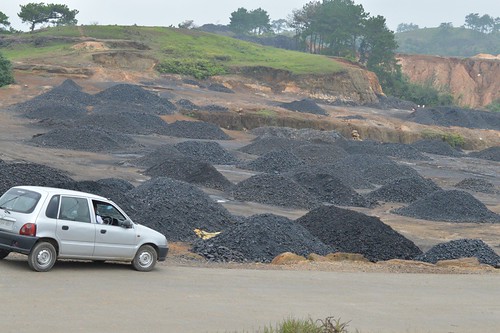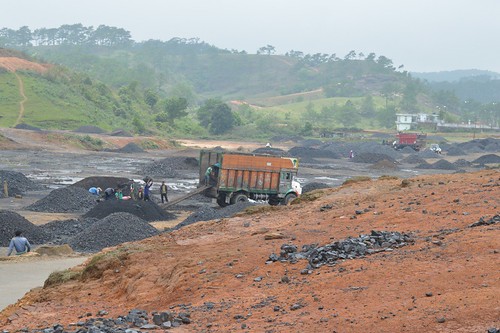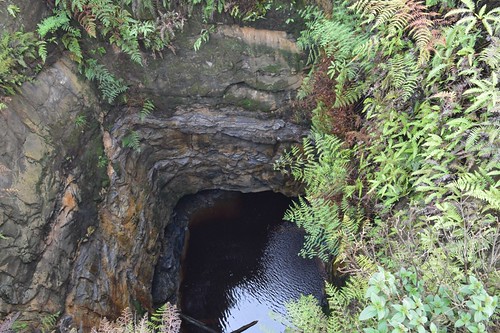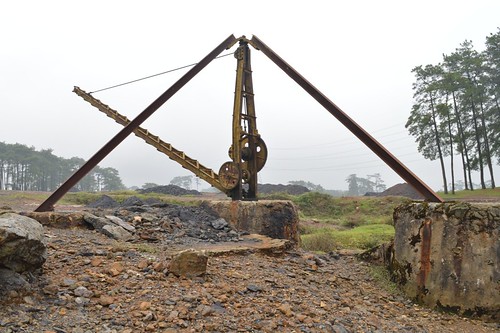By Amit Kumar, TwoCircles.net
Ladrymbai (East Jaintia Hills): For Mohammed Abdullah, May 15 is an important, and probably a life-changing, date. The 45-year-old, a resident of Barpeta, Assam, will return home having worked in and around the coal mines of East Jaintia Hills, Meghalaya, for the past nine years. He says he has had enough of the mines, and will go back to farming in his native village. However, this is not the result of a change of heart on the part of Abdullah; rather, he knows well that after May 15, once the government takes over all the over-ground coal reserves, he will have little to do here and sitting idle for even a day is not something that the father of three children can afford.

On n April 17, 2014, the National Green Tribunal in an interim order had banned the rat hole mining in Meghalaya, a sector that had for long been blamed for the environmental destruction of the once-pristine areas of the Jaintia Hills. Over the past two years, the mine owners, who are known to have powerful political connects, have appealed against the ban, which they believe has crippled the local economy and left thousands jobless. However, in December 2015, the NGT, after three extensions to transport all the coal on the ground, gave the final ultimatum to the miners: clear all remaining extracted and assessed coal from Meghalaya by May 15 because after that, the government will have the power to confiscate the rest of the coal left.

With no jobs in sight, labourers ill-prepared for future
While Meghalya is often presented as an ideal destination for tourists, East Jaintia Hills, a district that was formed as recently as 2014, is slightly different. Vast meadows and lush landscapes are interspersed with mounds of coal lying across hundreds of dumping grounds. The coal and the economy it fuels, means that the district also has migrants from all over Meghalaya and other areas, like Assam, West Bengal, and even Nepal. But since the ban of coal mining came into force in 2014, thousands of workers have left the place in search of other job opportunities. Although mining in the area has been going for over 100 years, the activity has hardly been regulated and as a result, the impact on the local flora and fauna has been catastrophic; a point that was cited as one of the most important reasons for banning mining in the area. The top soil has been completely eroded and left unusable for any kind of agricultural activity and dried out dozens of streams in the area, leaving the main river, Myntdu, gasping for survival. The river, according to locals, is 75% dead and no longer carries any fish. Houses and building lined up against the National Highway are all covered in thick black smoke from trucks and fine coal deposits.

Rat hole mining was made illegal in the 1970s, when India nationalised coal mines and gave state-run Coal India a monopoly. However, given Meghalaya’s location and the low quality of the coal, the governments, both local and central, did little to prevent thousands of people from taking enormous risks and extracting coal. The subsequent period saw thousands of people die in the mines. Impulse Social Enterprises, a non-profit organisation that filed a petition in the NGT leading to the ban, said 10,000 -15,000 people were believed to have died in rat holes between 2007 and 2014 in Meghalaya.
Regardless, the sector continued to attract labourers, as there was good money to be made despite the risks. Given that the mining activity, at least officially, has ended, most labourers have been finding temporary employment in clearing the over-ground coal and loading them into trucks. A group of six to eight people are paid about Rs 200 each for loading a truck to its permissible capacity of nine metric tonnes. Before the ban, a worker could make almost Rs 1,000 daily doing this business, but after the ban they consider themselves lucky to make Rs 500 a day, while going empty handed on other days. While workers like Abdullah from Assam are lucky enough to have a backup option, other labourers, especially the local ones, have been left wondering what to do next. Diminal Rymbai, a resident of Wapung Soh, a village in East Jaintia Hills, has been working in the coal industry for the past four decades. Until 2014, he was employed as a truck driver, taking the coal from the district to Beltola, Guwahati. However, after the ban, he lost his driving job and had to become one of the labourers loading the trucks with over-ground coal. “I am almost 50 years old and I cannot migrate now to find work,” he says. “I have eight children who attend schools and for the past two years, survival has been tough but we were able to make ends meet. After May 15, I do not know what to do,” he says. Agriculture is no longer an option for Rymbai as he lost all his paddy fields to mines a long time ago. “My entire village is dependent on coal mines for sustenance, and after May 15 we are all doomed,” he says, in a tone of resignation.

However, while local labourers can still count on having a home, the Nepali workers, most of whom arrived here in the 90s and have been here ever since, cannot claim even that much. Kamal Biskarma, a Nepali worker in his 50s, has been living around Lad Rymbai, the commercial capital of the region, for the past 24 years. With a family of five, he has little options at hand. “Earlier, I could make about Rs 10,000 a month but now I struggle to make even Rs 4,000 a month. I have never gone back to Nepal after I came here, so I doubt that is an option for me,” he says, standing next to a defunct crane towering over a disbanded rat hole mine. Anil Rai, his friend, says that given that they are Nepali, any possible government assistance will also elude them so for the time being, they are trying their best to find any possible source of income.
For mine owners, a possible end to rolling in money
It is important to point out that all coal miners are locals who have benefitted tremendously from the coal reserves. The districts of East and West Jaintia Hills are dotted with plush bungalows, almost all belonging to the mine owners. Sannio Siangshai, a local journalist, points out that the entire money made from the coal trade has remained with less than 5% of the population and these miners have been instrumental in ensuring that the NGT order gets regular extensions in the past. The miners, on the other hand, point out at how the local economy will be crippled and the loss of jobs for labourers to justify their mining activities. A mine owner who refused to be named because he was overloading his truck beyond the permissible limit of nine metric tonnes, spoke to Twocircles.net at one of the dumping grounds, said the end of mining activity has dealt a huge blow to their operations. “Ever since the ban has come into place, we have been forced to get rid of our reserves and this has come at a huge loss for us. “Because of the NGT order, we have been forced to sell the coal at very low rates. This coal would earlier sell for Rs 4,500-Rs 5,000 per tonne, but now we are forced to sell it for Rs 2,000 per tonne,” he said. While acknowledging that the morning has caused damage to the environment, he said that regulation and not banning was the way forward. He justified his overloading by adding that this was the only way he could take out all the coal before May 15. According to mine owners, the low prices of coal have helped the local cement industries the most.
Battle against mining an uphill task for new police force
In Kheliehriat, the district headquarters of East Jaintia Hills, the Superintendent of Police S Thmar explained the uphill task the newly-formed district was facing in its efforts to implement the NGT order.

“The district was formed around the same time as the NGT order, so initially it was a big challenge to implement the order as a lot of locals protested against the order,” he told Twocircles.net. The police had constituted a special task force to check on violations. Since the Police were filing a status report to the NGT before the deadline, he refused to provide exact details on how many violations had taken place, but sources in the office told Twocircles.net that they had reported about 54 violations of extraction of coal and about 200 cases of overloading. The latest FIR had been filed on April 14 agsinst a local miner for use of explosives to extract coal. The SP however, added that given the plummeting prices of coal and the upcoming deadline, fresh extraction had fallen considerably.
The ban on coal mining and it’s subsequent impact will only be clear after May 15, but as of now, the district of East Jaintia Hills, and it’s workforce, are not sure what their next move will be.
